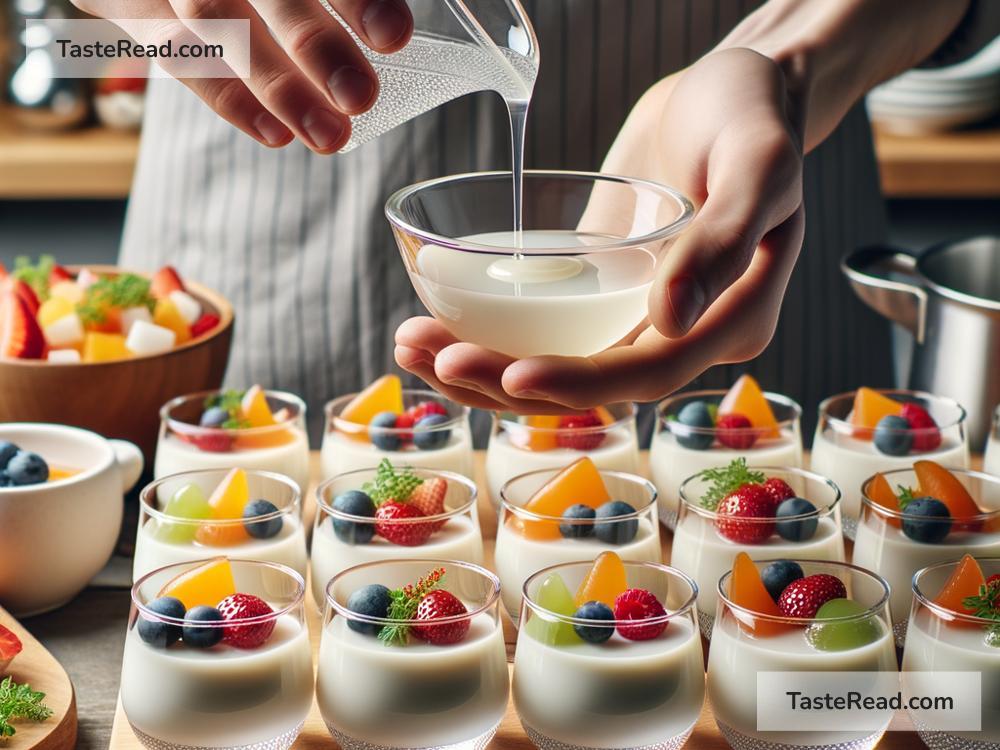Mastering the Science of Using Agar-Agar in Desserts
Are you a dessert lover or a home baker looking to elevate your sweet creations? If you’ve not yet discovered the wonders of agar-agar, it’s about time we dive into this game-changing ingredient that might just become your new best friend in the kitchen. Often hailed as a vegetarian alternative to gelatin, agar-agar has its unique charm and science that can transform your desserts from good to extraordinary. So, let’s get into the nitty-gritty of mastering the science of using agar-agar in desserts.
What is Agar-Agar?
Originating from Asia, agar-agar is a gelatinous substance derived from red algae or seaweed. It’s been a staple in Asian cuisine for centuries, not just for its gelling ability but also for its nutritional benefits. Agar-agar is vegan, gluten-free, and relatively odorless and tasteless, making it an incredibly versatile ingredient.
The Science Behind Agar-Agar
The magic of agar-agar lies in its gelling properties. Unlike gelatin, which is derived from animal collagen, agar-agar sets more firmly and doesn’t melt at room temperature, which makes it ideal for warmer climates. When dissolved in hot water and then cooled, agar-agar forms a gel that’s surprisingly resilient and can hold its shape much better.
Understanding the science is crucial: agar-agar needs to be brought to a boil to fully dissolve and activate its gelling abilities. It begins to set at around 50°C (122°F), much higher than gelatin, which starts setting at 35°C (95°F). This feature allows for more flexibility when working with desserts that require chilling or layering.
Using Agar-Agar in Desserts: Tips and Tricks
Start with the Ratio
The general rule of thumb is to use 1 teaspoon of agar-agar powder to thicken 1 cup of liquid. However, the exact amount might vary depending on the desired firmness of your dessert and the type of liquid you’re using. It’s always a good idea to start with a small quantity and adjust accordingly in your next attempt.
Boil to Dissolve
Remember, agar-agar needs to boil for a few minutes to dissolve properly. Unlike gelatin, which can bloom in cold water, agar-agar requires heat to activate. Ensure that your agar-agar mixture comes to a gentle boil and keep stirring to avoid any lumps.
Perfect for Layered Desserts
Due to its firm setting, agar-agar is excellent for creating layered desserts. Since it doesn’t melt easily at room temperature, you can layer different flavors and colors without them blending into each other. Just make sure the previous layer is somewhat set before adding the next one to get those clear, beautiful layers.
Experiment with Flavors
Agar-agar’s neutral flavor means it can blend seamlessly with any ingredient. From coconut milk for a tropical panna cotta to a tangy lemon jelly, the possibilities are endless. It’s also great for making fruit terrines, vegan cheesecakes, and even mousse!
Quick to Set
Another fantastic feature of agar-agar is its ability to set much quicker than gelatin. You won’t have to wait overnight to enjoy your dessert – a few hours in the refrigerator, and it should be ready to go. This makes agar-agar perfect for those last-minute dessert cravings.
A Few More Words of Wisdom
While agar-agar is relatively easy to use once you get the hang of it, there are a couple of things to keep in mind. Some fruits, particularly those with high levels of enzymes like fresh pineapple, kiwi, and papaya, can interfere with the setting process. To use these fruits in your agar-agar desserts, consider cooking them first to deactivate the enzymes.
Moreover, while agar-agar is renowned for its firm setting properties, ensure not to overdo it – nobody enjoys an overly rubbery dessert. The key is to achieve that perfect balance between firmness and creaminess, depending on what you’re making.
Wrapping Up
Agar-agar is not just an ingredient; it’s a versatile tool that, once mastered, can open up a whole new world of dessert possibilities. By understanding the science behind it and following these simple tips, you’re well on your way to creating desserts that are not only visually stunning but also packed with flavor. The best part? It’s all vegan-friendly.
Happy experimenting, and may your desserts be as delightful to look at as they are to eat!


